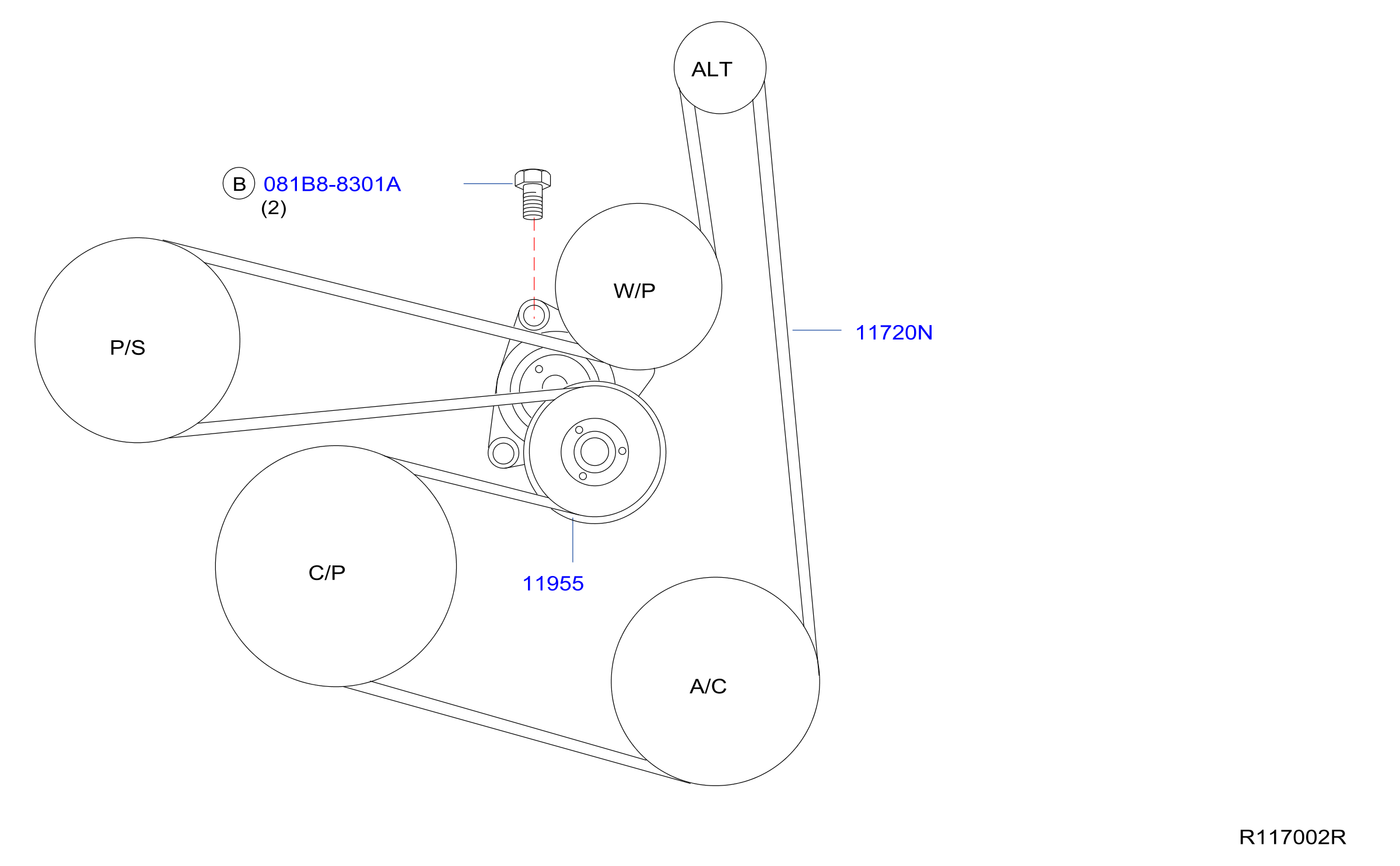Serpentine Belt System Overview
The serpentine belt in Nissan's 2.5-liter engine (QR25DE) drives vital accessories such as the alternator, power steering pump, air conditioning compressor, and sometimes the water pump. A properly functioning belt ensures smooth operation and prevents engine failures. Common symptoms of wear include squealing noises or loss of accessory power.
Routing Diagram Description
For most Nissan 2.5L engines, the serpentine belt follows a specific path. Use this text-based guide to visualize routing without a diagram:
- Start at the crankshaft pulley, looping counterclockwise.
- Pass over the idler pulley to maintain tension.
- Route to the alternator pulley, then to the air conditioning compressor.
- From there, proceed to the power steering pump, if equipped.
- Finally, return to the crankshaft pulley to complete the circuit.
Note: Routing varies slightly by model year; always verify with a service manual for your specific vehicle.

Replacement Procedure
To replace the serpentine belt safely, follow these steps:
- Relieve belt tension using the automatic tensioner—rotate it with a wrench to slacken.
- Slide off the old belt, ensuring it's clean and free of debris.
- Align the new belt along the described routing path, checking for proper engagement.
- Release the tensioner slowly to secure the belt, then test for correct tension—about 1/2 inch deflection at midpoint.
Wear gloves and safety glasses for protection; incorrect routing causes premature wear or belt slippage.
Maintenance Best Practices
Regular upkeep extends belt life and prevents breakdowns:
- Inspect every 15,000 miles for cracks, fraying, or glazing—replace immediately if damaged.
- Ensure pulleys are aligned and free of corrosion to avoid abnormal wear.
- Address unusual noises or accessory failures promptly to avoid costly engine damage.
Follow Nissan's recommended service intervals for reliable operation.

